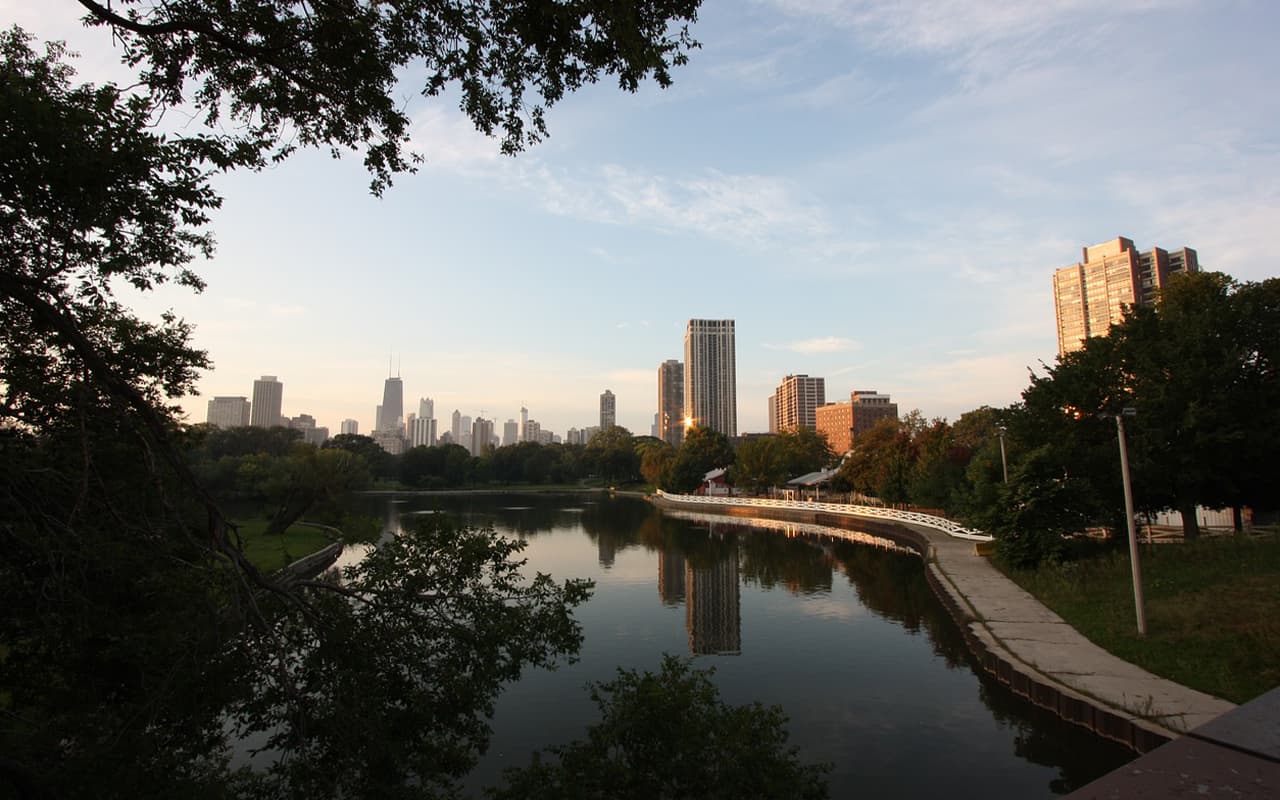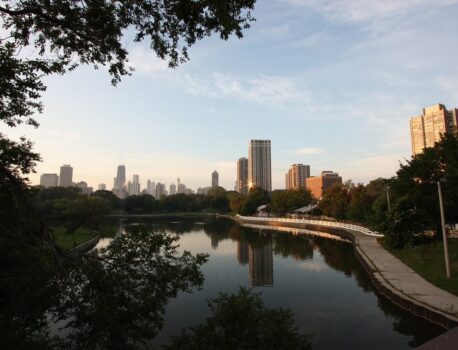The Abraham Lincoln Public Park stretches for 11 kilometers along the shore of picturesque Lake Michigan. It is incredibly popular among locals and visitors to the city, because, if statistics are to be believed, about 20 million people come here every year. The park, named after the beloved American reformer, was founded in 1868. Just ten years before, the place of the park was occupied by a public cemetery, but the locals did not want to put up with the gloomy neighborhood, and in 1860 the city council decided to organize a “lake park” (Lake Park) on this swampy shore. The city began to improve the area, allocating a decent amount of money, and soon a green and well-maintained city park was born, which received its name in 1865, after the assassination of President Lincoln.
Lincoln Park became a place of cultural life, with carnival processions, open-air concerts, and waterfront theater performances in the summer.
Over the next century, the park was systematically expanded to the north and south, and local landscape designers and architects were engaged in its development and improvement. By the mid-20th century, the result of their labors was a huge park complex with baseball and soccer fields, landscaped fishing areas, golf courses and tennis courts, manicured beaches and protected areas.
In addition to natural and athletic facilities, it has a greenhouse, zoo, Nature Museum, Historical Museum, North Avenue Beach, Conservatory, and monuments to Grant, Franklin, and Lincoln.
The park has become a cultural destination, with carnival processions, outdoor concerts, and waterfront theater productions in the summer. People come to Lincoln Park to relax their bodies and souls, because there is no better place for that!
Lincoln Park Zoo
The most beloved place in Lincoln Park by adults and children alike is the local zoo. Founded in 1868, it is considered the oldest in the New World. One of its rare and long-lived attractions is an ancient oak tree planted back in the early 19th century. The history of the zoo began with beautiful swans – a gift to the state of Michigan from New York, the next came more severe newcomers – bears and lions. Much later, monkeys got their apartments in the zoo. To make the animals live comfortably and favorably in captivity, they are created conditions as close to the natural environment as possible. The animals calmly walk around the territory, feeling themselves a part of the surrounding world. Large carnivores yawn lazily in the shade of trees after a meal, cheetahs and panthers survey the surroundings from a height, occupying beds and branches on trees, flocks of primates roam the ground, turtles crawl in their enclosures, birds chirp.

